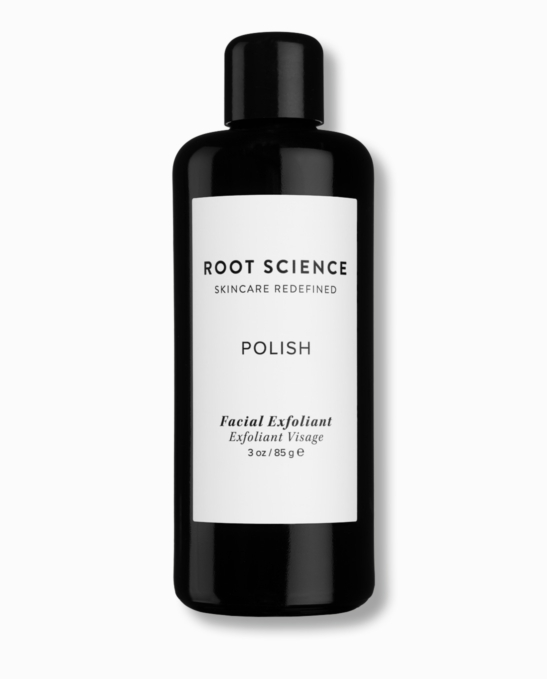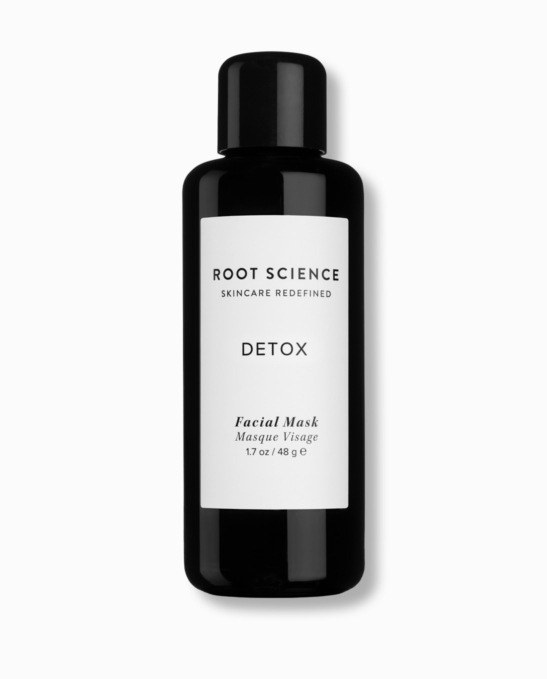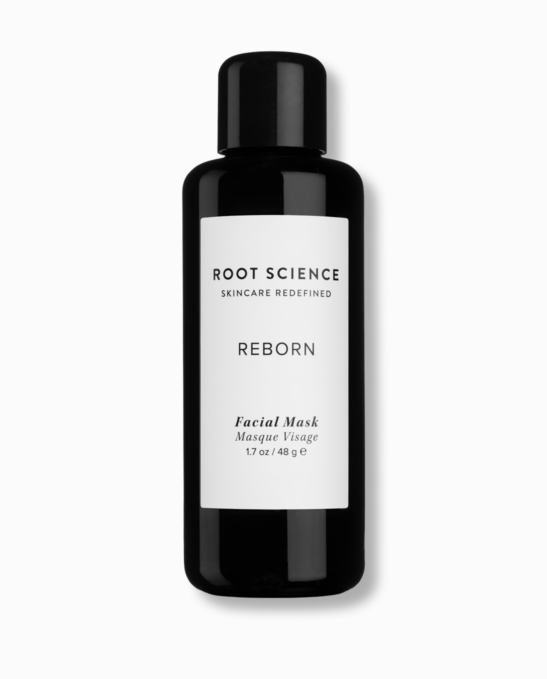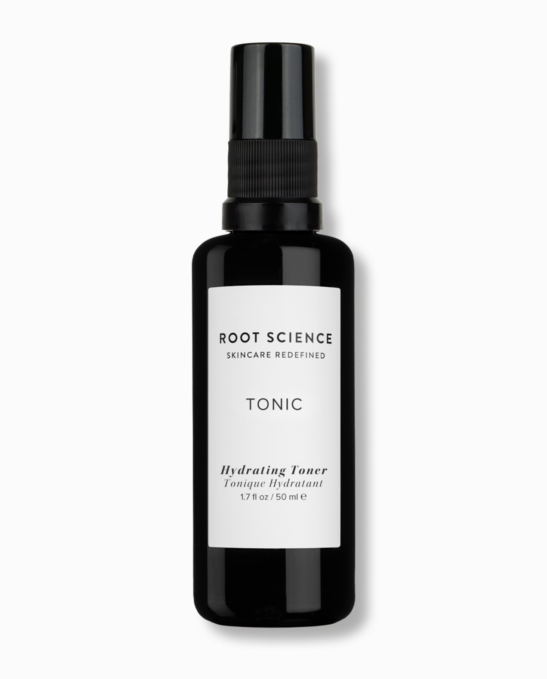After reading this headline, we know what you’re thinking. “Are Twizzlers going to make my skin brighter?” While they might make your day sweeter, don’t go mashing them up and applying them your skin (as fun as that might sound). We’re talking about the time honored medicinal herb, licorice root. Let’s go over the many ways licorice root aka nature’s skin brightener benefits your skin!
The History Of Licorice Root
Now that we’ve had some fun, let’s take a serious look at the benefits of licorice root. And not to burst your bubble, but neither Twizzlers nor Red Vines actually contain licorice root.. So, to get some real licorice in your life, you need to go to the root of a plant known as Glycyrrhiza glabra.
Glycyrrhiza glabra is a relative of peas and beans as a member of the legume family. While this plant does flourish in southern Europe, it is predominantly grown throughout Asia.
Licorice root has been around since the first recorded works of humankind. In fact, much of this root was found in the tomb of King Tut. Back then, Egyptians saw licorice root as a remedy for every ailment. They would seep the root in a tea called “Mai sus.”
Medicinal Uses Of Licorice Root
As the human race evolved, expansion to new areas took place. As a result, the herb traveled to many locations. Hindus used the root in a beverage with milk and sugar to increase sexual energy. Why they would need more sugar, who knows? Licorice root is 50 times sweeter than sugar. That’s why in Sanskrit it translates to “sweet stalk.”
Besides Hindu, Scythians used licorice root to hold themselves over as they went twelve days without water. They shared this knowledge with the Greeks, who dubbed the plant, “the sweet root.” From there, the legacy of the licorice root forged on.
All of the promising effects of licorice root led this popular remedy to be 1 of the 50 essential herbs in Traditional Chinese Medicine. Practitioners to this day use the root to alleviate conditions that require:
– Anti-Inflammatory
– Cough Suppressant
– Detoxifying Spleen and Stomach
– Stopping Muscle Spasms
– Revitalizing Liver
Since humankind first discovered the potential of licorice root, studies have confirmed many of the plant’s medicinal properties. Those therapeutic benefits also carry over to topical application to benefit the skin. Let’s take a look at the many ways to use licorice root to promote optimal skin health.
What Makes Licorice Root So Powerful?
To understand how to use licorice root for skincare needs, you should get a brief introduction on what makes this unique plant so therapeutic.
Glycyrrhizin
Licorice root produces gel-like saponins named glycyrrhizin. This saponin secretes the reason for the sweet stalk’s sugary flavor, glycyrrhizic acid. You’ll see this word pop up later as it’s associated with many of the root’s therapeutic properties.
Liquiritin
This is a glucose molecule derived from a common compound in plants known as liquiritigenin. Liquiritin has strong antioxidant properties that make licorice root an effective preventative part of your skincare regimen.
Licochalcone
There are over 300 polyphenols that make licorice root for skin a sought after ingredient. One important phenol is licochalcone. It’s known to reduce skin irritation. In fact, licochalcone is a common ingredient in many over-the-counter products including Eucerin.
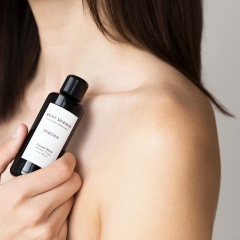
Organic. Phytoactive. Skin Nourishment.
Looking To Add Licorice Root Into Your Skincare Routine?
Skin Transformative Powers Of Licorice Root
Now that you know the major players, let’s look at how licorice root can benefit your skin . Here are the top three benefits of licorice root when it comes to skin health.
Licorice Root To Target Hyperpigmentation
Hyperpigmentation is a common skin condition that is caused by excess melanin production. Hyperpigmentation is triggered by many factors, including your body’s own reaction to inflammation taking place on the inside. Everything from excess sun exposure, shifting hormones to surgery and pregnancy can cause excess melanin production. When this happens, the affected areas tend to get darker.
Studies have found that the skin lightening compound found in licorice root called liquiritin can help lighten these areas. Further research confirmed that both liquiritin and licochalcone inhibit the enzyme known as tyrosinase. When this enzyme reacts with the amino acid, tyrosine, it converts the protein to melanin.
If you use licorice root for skin care needs, then these unique compounds will slow down production of darker pigments. In turn, this will lessen hyperpigmentation. And one of the main advantages of licorice root over conventional skin lighteners is that there is no down time, photosensitivity or health risks, which are commonly associated with synthetics such as hydroquinone.
Licorice Root To Soothe Sensitive Skin
Another great use of licorice root for skincare needs is to soothe sensitive skin. Up to 20% of the root is comprised of glycyrrhizin, a triterpenoid saponin of licorice.
When these triterpenoids come into contact with the skin, it triggers receptors that naturally cause steroid growth in the skin. Steroids help to decrease recovery time. This is especially true of conditions that increase skin sensitivity such as eczema and rosacea.
The anti-inflammatory properties of licorice root help reduce skin conditions that cause:
– Puffiness
– Rashes
– Redness
– Swelling
– Itching
Licorice Root For Skin Damage
Skin damage is caused by many factors. Compromised skin health is an ongoing cycle that must be addressed internally and externally. To gain control of your skin health, you must treat the root cause of the issue. Whenever our body is fighting inflammation, it becomes more susceptible to free radical damage. Licorice root is not only a wonderful topical treatment, but can also serve as a boost to your health when taken internally.
In addition to our diet and lifestyle choices, there are other outlying factors that introduce free radicals to our system. From pollutants in the air to damage caused by the sun’s UV rays, we are constantly fighting off free radicals.
Free radicals are foreign molecules that raid your body and feed on healthy cells. They can lead to anything from acne to wrinkles. Your skincare products can help protect your skin from the damage caused by free radicals. Look for formulas with antioxidant-rich ingredients; such as licorice root, Vitamin C, and Astaxanthin.
What makes licorice root for skin care such a sought after ingredient are the 300 polyphenols and flavonoids that populate this root. Studies confirm that licorice has many unique compounds with antioxidative properties.
Licorice Root Antioxidants Include:
– Hispaglabridin A
– Hispaglabridin B
– Glabridin
– Isoliquiritigenin
– Formononetin
Using Licorice Root For Skin Care Needs
The next time you are looking to give your skin care regimen an all-natural boost, try using products that contain whole licorice root or extracts. Licorice root has many unique compounds you can’t find anywhere else. That’s why this root has been long heralded as a staple in Traditional Chinese Medicine and why licorice root has now become a staple in natural skincare formulas.
Shop Featured Products!
Experience the transformative powers of Licorice Root, found in:
Disclaimer: This content is for informational and educational purposes only. It is not intended to provide medical advice or to take the place of such advice or treatment from a personal physician. All readers/viewers of this content are advised to consult their doctors or qualified health professionals regarding specific health questions. Neither Root Science nor the publisher of this content takes responsibility for possible health consequences of any person or persons reading or following the information in this educational content. All viewers of this content, especially those taking prescription or over-the-counter medications, should consult their physicians before beginning any skincare, nutrition, supplement or lifestyle program. The views and products expressed are not intended to treat, cure or prevent any disease.

